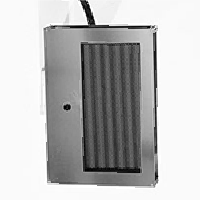NIKLAS BINZBERGER
3
F


A herd […] is always on alert; at almost every moment some eyes, ears and noses will command all approaches, and the start or cry of alarm of a single beast is a signal sign to all its companies.
Over the past century, various developments have resulted in a set of body ontologies that are not based on the familiar anatomical-physiological ontology of the modern body, but quite explicitly construe the body in terms of flows of information and communication patterns. The endocrinological body, originating in the early twentieth century, for instance, knows the body as a biochemical entity, with an ontology of chemical substances that are characterised in terms of messages, signals, and feedback loops. Later, immunology construed a body that differed significantly from the anatomical body in its construction of body boundaries - the boundary between self and other - as the result of a fight going on beneath the skin. The sciences and practices of genetics, finally have generated a body ontology that takes the building blocks of the body to be “information”: the human genome and DNA itself are codes to be broken in order to enable us to “read” the “blueprints of life.” The “stuff” of genetics is information - no matter how this stuff can be described in biochemical terms of proteins, its “essence” lies in its coding function.
F.3.16
PIR SENSORs, RELAYS, Polished inox
2016
Passive infrared sensors are sensitive to a person's skin temperature in contrast to background objects at room temperature. The PIR-sensors are part of a circuit board operating relays. The recipients have no evidence wether the relays are running an operation or not, they can only hear the sound of a relay switching when the pass by. The sensor boxes are set in a certain order that allows to survey the whole exhibition.

